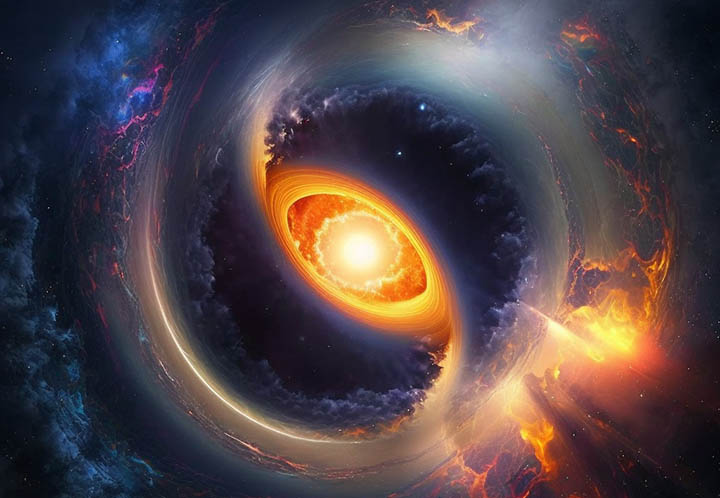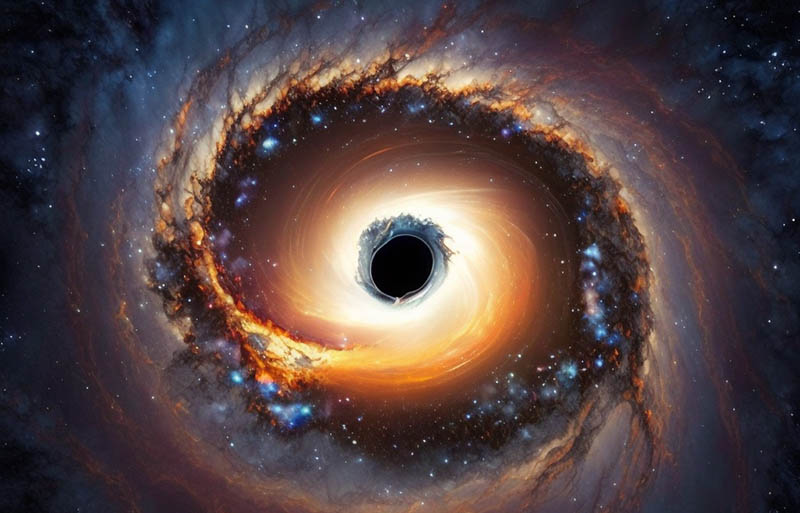A huge black hole in the Milky Way is millions of times more massive than the Sun. It is the center of mass of our entire galaxy.
- The supermassive black hole at the center of the Milky Way is located about 25,000 light-years from Earth in the direction of the Sagittarius constellation. It is named Sagittarius A* (pronounced “Sagittarius A-star”).
- The estimated mass of Sagittarius A* is around 4 million times the mass of the Sun, making it the most massive black hole known in the universe. The distance between us and the black hole in the Milky Way center is about 5000 light-years.
- It is believed that Sagittarius A* formed as a result of the merging of several smaller black holes and the accretion of matter over billions of years.
- The event horizon of Sagittarius A* is the point of no return, beyond which not even light can escape the gravitational pull of the black hole. Its estimated size is around 44 million kilometers.
- Matter falling into the black hole forms an accretion disk, which heats up to millions of degrees and emits intense radiation.

- Jets of high-energy particles are launched from the vicinity of Sagittarius A* and can extend for thousands of light-years.
- The strong gravitational pull of the black hole in the Milky Way center affects the motion of stars in the Milky Way, and it is believed to play a key role in shaping the structure of the galaxy.
- The presence of Sagittarius A* was first inferred from its effect on nearby stars, but it was not directly imaged until the early 21st century using advanced telescopes.
- Sagittarius A* is a potential source of gravity waves, which are ripples in the fabric of spacetime that are created by the acceleration of massive objects.
- Despite being one of the most studied objects in the universe, many aspects of Sagittarius A* and black holes in general remain a mystery to scientists. They continue to be the subject of intense research and investigation.
